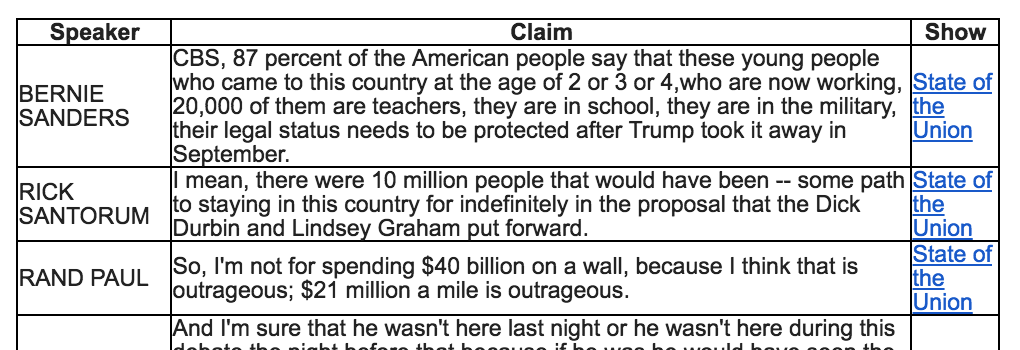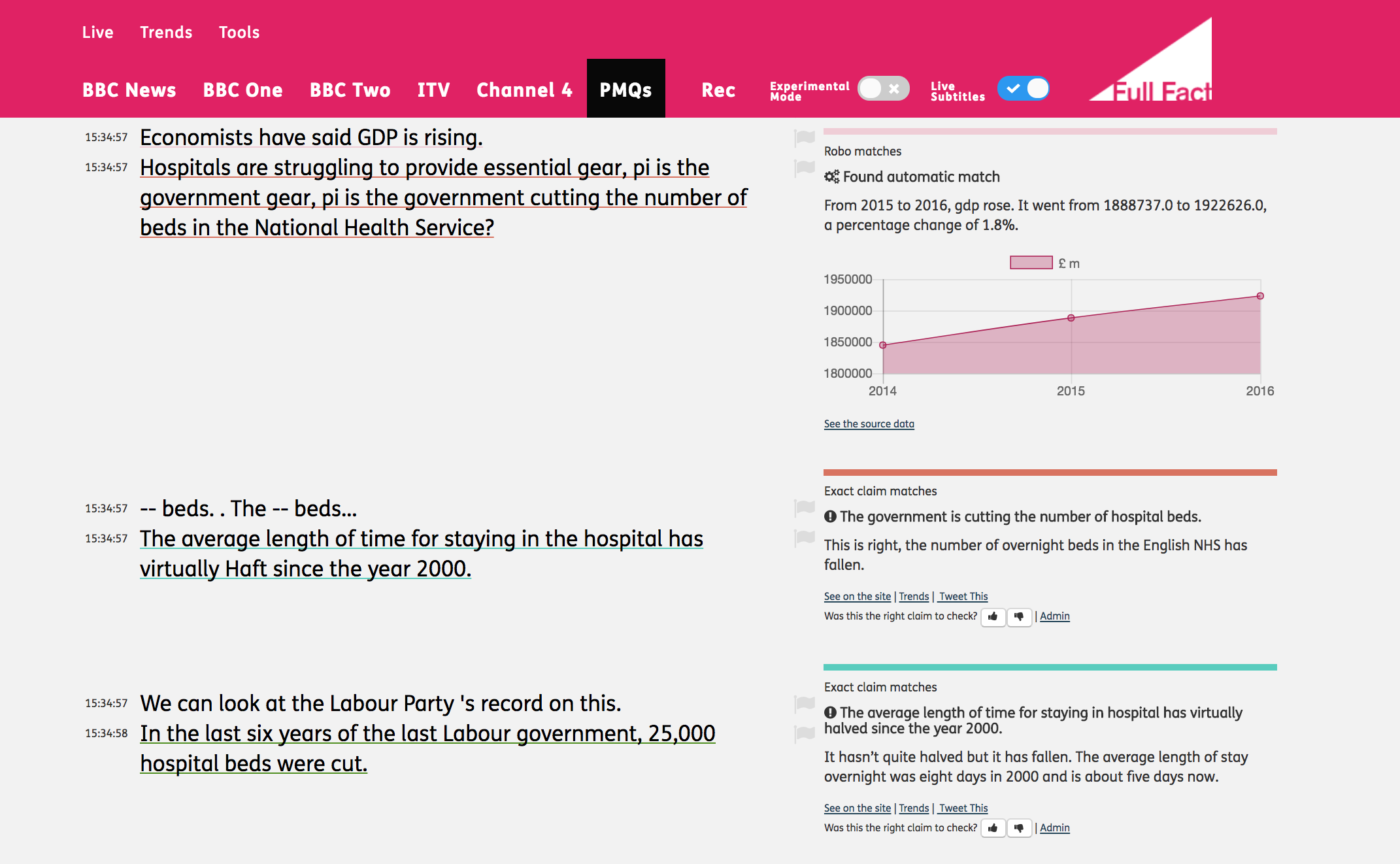Automation is already helping fact-checkers publish their work.
An explainer The Washington Post Fact Checker published last week centered on a claim former senator Rick Santorum (R-Pa.) made on CNN’s “State of the Union.” The comments addressed the Deferred Action for Childhood Arrivals (DACA) program and came as Congress was trying to reach a deal on immigration reform in order to end the government shutdown.
“There were 10 million people that would have been on some path to staying in this country for indefinitely in the proposal that [Sens.] Dick Durbin and Lindsey Graham put forward.”
— Former senator Rick Santorum (R-Pa.), in remarks on CNN’s “State of the Union,” Jan. 21, 2018
Usually, The Fact Checker’s reporters would have found the claim themselves by manually combing over TV transcripts. But this time they didn’t.
“I had actually looked at that transcript but I missed that claim,” said Glenn Kessler, who runs The Fact Checker. “So it would have been lost to history if it had not been for ClaimBuster.”
On Monday at 10 a.m., Kessler received an email from the Duke Reporters’ Lab with Santorum’s comments, along with several others made on CNN. The alert used ClaimBuster, an automated fact-checking tool created by computer scientists at the University of Texas at Arlington, to serve up the potential fact checks.
But while ClaimBuster has been around since 2015, this alert was different.

Developed by the Reporters’ Lab’s Tech & Check Cooperative, the service combs through CNN’s transcripts and automatically puts them through ClaimBuster’s API to parse out which statements are checkable. Then, the feature automatically sends a daily email to participating fact-checkers with statements they might be interested in scrutinizing (Disclosure: The Reporters’ Lab helps pay for the Global Fact-Checking Summit).
That’s easier than having a fact-checker watch CNN for claims, Bill Adair said.
“The process of looking for claims to check is time-consuming,” said the director of the Reporters’ Lab and Knight Professor of Journalism & Public Policy at Duke. “What we’ve done is automate that in a very cool way.”
Why do the alerts only pull from CNN right now? Mark Stencel, co-director of the Reporters’ Lab, told Poynter that since the network’s transcripts are notoriously riddled with errors, it seemed like a good first place to pull from; every additional source they add in the future will likely be easier to deal with on the back end.
And that’s important, seeing as the alerts are a new use of ClaimBuster’s API.
“Our use of ClaimBuster to generate these daily ‘Tech & Check Alerts’ is, as far as I know, the first project to deploy and industrialize the algorithm's power for fact-checkers to use as part of their daily routine,” Stencel said.
The DACA explainer is the first time a fact-checker has published something using the alerts, Stencel said. Kessler said that while The Fact Checker mostly relies on reader questions and submissions when choosing fact checks, the Tech & Check Alerts could help fill in workflow gaps.
“In one week, we picked one (claim). I don’t know if that would be sustainable, but it’s quite possible,” he said. “If it saves 15 minutes of scrolling through transcripts, it’s a great tool.”
This isn’t the only automated tool for fact-checkers the Reporters’ Lab is working on.
In September, the Reporters’ Lab launched the $1.2 million Tech & Check Cooperative to develop automated fact-checking tools and apps, with $800,000 from the Knight Foundation alone. Since then, a three-student research team at Duke — including one freshman — has been working on developing the email alerts.
And the Reporters’ Lab isn’t the only organization developing automated tools for fact-checkers.
Earlier this month, Buenos Aires-based fact-checker Chequeado launched Chequeabot, which automatically pulls text from 25 media outlets around Argentina, identifies checkable claims and matches them against a database of fact checks. That feature now leads off the team’s Monday meetings.

In the United Kingdom, fact-checking charity Full Fact has developed and is using an inward-facing automated platform that automatically pulls information from places like the BBC and Parliament to identify previously checked claims. Then, fact-checkers can re-share the articles on social media.

One potential source for future Tech & Check Alerts is government records like congressional transcripts — similar to Full Fact’s use of Parliament recordings. The Reporters’ Lab has partnered with Digital Democracy in California to parse through video of state legislative proceedings and find checkable statements, Stencel said.
In the future, Adair said that the Tech & Check Alerts could link up with the Reporters’ Lab Share the Facts database to create shortcuts for repeated claims and fact checks.
“This is going to be a very powerful tool for fact-checkers,” Adair said.







